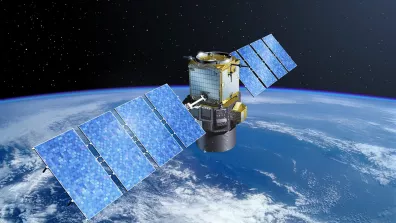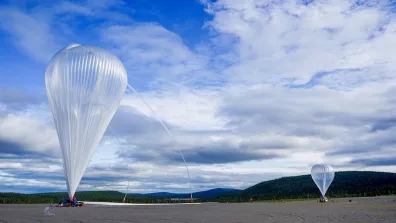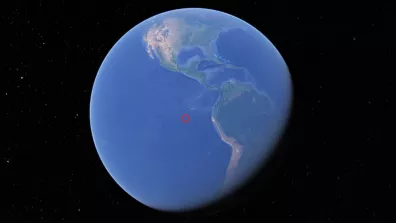CALIPSO is the result of a long-standing collaboration between the NASA Langley Research Center (LaRC) and CNES. The satellite, based on a PROTEUS platform supplied by Thales Alenia Space, was launched on 28 April 2006. It was operated jointly by the CNES teams in Toulouse and NASA teams in Hampton, VA.
CALIPSO was part of the A-Train, a space observatory made up of American-French-Japanese satellites (Aqua, Parasol, Cloudsat, Aura, and then GCOM-W1 and OCO-2) requiring very specific space coordination (CALIPSO separated from CloudSat by just a few dozen seconds).
This constellation allowed, for the very first time, a direct synergy between active instruments (lidar and radar) and passive instruments (radiometry), which opened up new paths in the observation of the atmosphere from space.
For 17 years, the mission provided measurements allowing an almost-3D characterisation of the structural and radiative properties of clouds and aerosols by laser sounding (CALIOP instrument) and infrared imagery (IIR instrument), in close association with the CloudSat cloud radar observations.
The image shows a series of vertical profiles acquired by the CALIPSO lidar, February 1, 2015.
The white/red horizontal band above the lidar curtain represents the radiances observed simultaneously by the IIR. Below the lidar image are true-color Aqua satellite images acquired over Europe, the Mediterranean Sea and North Africa, approximately 12 hours after CALIPSO's nighttime pass.
Bright lights observed by NPP VIIRS are overlaid to identify populated areas.
CALIPSO played a key role, in connection with modelling, in the understanding of different processes coupled with climate change. It should be pointed out that this mission has led to a great many scientific advances, with more than 4,000 publications, including domains not initially targeted (ocean, cryosphere, biosphere, etc.).
Today, the fuel reserves have depleted and, in a drifting orbit, the satellite can no longer deliver enough energy to operate the scientific instruments. The scientific mission therefore ended on 1 August. The CNES teams will however continue to operate CALIPSO for a few more months to carry out technological experiments. Then the satellite will be finally passivated before being shut down at the end of 2023.
CNES and NASA thank the international community for its continued interest and support.
Over the next two years, the project will continue to refine and document its vast catalogue of data products and will inform the community of the update of these products.





